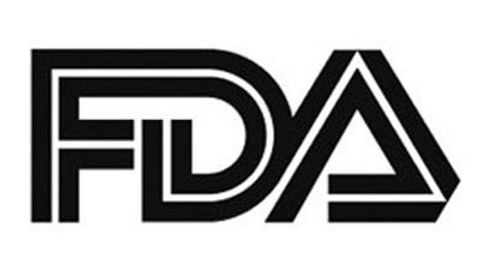FDA Grants Fast Track Status to Dianhydrogalactitol for Newly-Diagnosed Glioblastoma
Fast track designation has been granted by the FDA to dianhydrogalactitol for the treatment of patients with newly-diagnosed unmethylated glioblastoma.

The FDA has granted a fast track designation to dianhydrogalactitol (VAL-083), a first-in-class small molecule therapeutic, for the treatment of patients with newly-diagnosed unmethylated glioblastoma (GBM), according to Kintara Therapeutics, Inc.1
VAL-083 has been shown to have a novel mechanism of action that has displayed clinical activity against various cancers, including central nervous system, ovarian, non-small cell lung, bladder, and head and neck cancers.
The fast track status comes from data of a phase 2 trial (NCT02717962) evaluating VAL-083 in patients with GBM who had an unmethylated promoter of the MGMT gene. Further, top-line data from the GBM AGILE trial (NCT03970447) evaluating various therapies in GBM, including VAL-083, are expected to be released by the end of 2023.
"We believe fast track designation is indicative of VAL-083’s potential to improve outcomes for patients with glioblastoma, the most aggressive form of brain cancer," said Robert E. Hoffman, president and chief executive officer of Kintara, in the press release. "We look forward to announcing top-line data from the international registrational phase 2/3 GBM AGILE trial around the end of calendar year 2023. Fast track designation allows us to work closely with the FDA and may expedite our commercial launch of VAL-083, if approved."
In September 2021, data from a phase 2 trial of patients with GBM who had an unmethylated promoter of the MGMT gene revealed that adjuvant treatment with VAL-083 following chemoradiation with temozolomide (Temodar) in patients with GBM who have an unmethylated promoter of the MGMT gene led to an improvement in survival and appeared safe compared with historical control.
Findings showed that in 36 patients evaluable for efficacy, the progression-free survival (PFS) was 10.0 months (95% CI, 8.2-10.8) vs a PFS range of 5.3 to 6.9 months historically observed in this patient population. Additionally, the median overall survival (OS) with VAL-083 was 16.5 months (95% CI, 13.3-19.3) compared with the historic OS of between 12.7 to 16.0 months.
Patients enrolled in this phase 2 study included individuals aged 18 years and older with recurrent or progressive GBM (cohort 1) and patients who had newly diagnosed GBM and completed chemoradiation treatment with temozolomide along with receiving no subsequent maintenance of temozolomide (Temodar).2
Those included had a histologically confirmed initial diagnosis of primary intracranial WHO grade IV malignant glioblastoma, preliminary MGMT status, adequate recovery from recent surgery, were at least 4 weeks removed from chemotherapy, recovery from prior treatment-related adverse effects (AEs), adequate organ function, and a life expectancy of at least 12 weeks.
In the phase 2 study, both cohorts received VAL-083 treatment at 30 mg/m2 via intravenous infusion for 3 consecutive days at the beginning of every 21-day cycle, which was continued for 12 doses or until study discontinuation.
The primary end point of the study was OS, with the secondary end points including estimates of PFS, median PFS, OS, overall response rate, duration of response, safety, quality of life, and pharmacokinetics.
Additionally, the safety data demonstrated in the phase 2 trial were consistent with prior studies with the most common AE being myelosuppression. Only 1 patient experienced a serious AE which was possibly related to VAL-083.
As for the phase 2/3 GBM AGILE trial, multiple regimens, including VAL-083, temozolomide, lomustine, regorafenib (Stivarga), paxalisib, and radiation, will be examined in patients with newly diagnosed and recurrent glioblastoma.3
Enrollment in the study for patients with newly diagnosed GBM is open to patients aged 18 years and older with a histologically confirmed grade IV GBM, including gliosarcoma, a Karnofsky performance status of at least 60% within 14 days of randomization, and availability of tumor tissue representative of GBM from definitive surgery or biopsy.
Those with recurrent GBM can be included in the GBM AGILE trial if they have a histologically confirmed grade IV glioblastoma, including gliosarcoma, evidence of recurrent disease by RANO criteria, 2 scans to confirm progression, and a Karnofsky performance status of 70% or more.
The primary end point of the trial is OS with secondary end points including PFS, tumor response, and duration of response.
References
Kintara Therapeutics granted fast track designation from the FDA for VAL-083 for newly-diagnosed glioblastoma. News release. Kintara Therapeutics, Inc. June 15, 2022. Accessed June 20, 2022. https://prn.to/3tN6cQJ
Study of VAL-083 in patients with MGMT unmethylated, bevacizumab-naive glioblastoma in the adjuvant or recurrent setting. ClinicalTrials.gov. Updated March 24, 2022. Accessed June 20, 2022. https://clinicaltrials.gov/ct2/show/NCT02717962
A trial to evaluate multiple regimens in newly diagnosed and recurrent glioblastoma (GBM AGILE). ClinicalTrials.gov. Updated June 14, 2022. Accessed June 20, 2022. https://clinicaltrials.gov/ct2/show/NCT03970447
FDA Approves FoundationOne CDx as Companion Diagnostic for Tovorafenib in Pediatric Low-Grade Glioma
January 17th 2025FoundationOne CDx is now FDA-approved as the first companion diagnostic for tovorafenib, enabling targeted treatment for relapsed/refractory pediatric low-grade glioma with BRAF mutations or rearrangements.
Read More